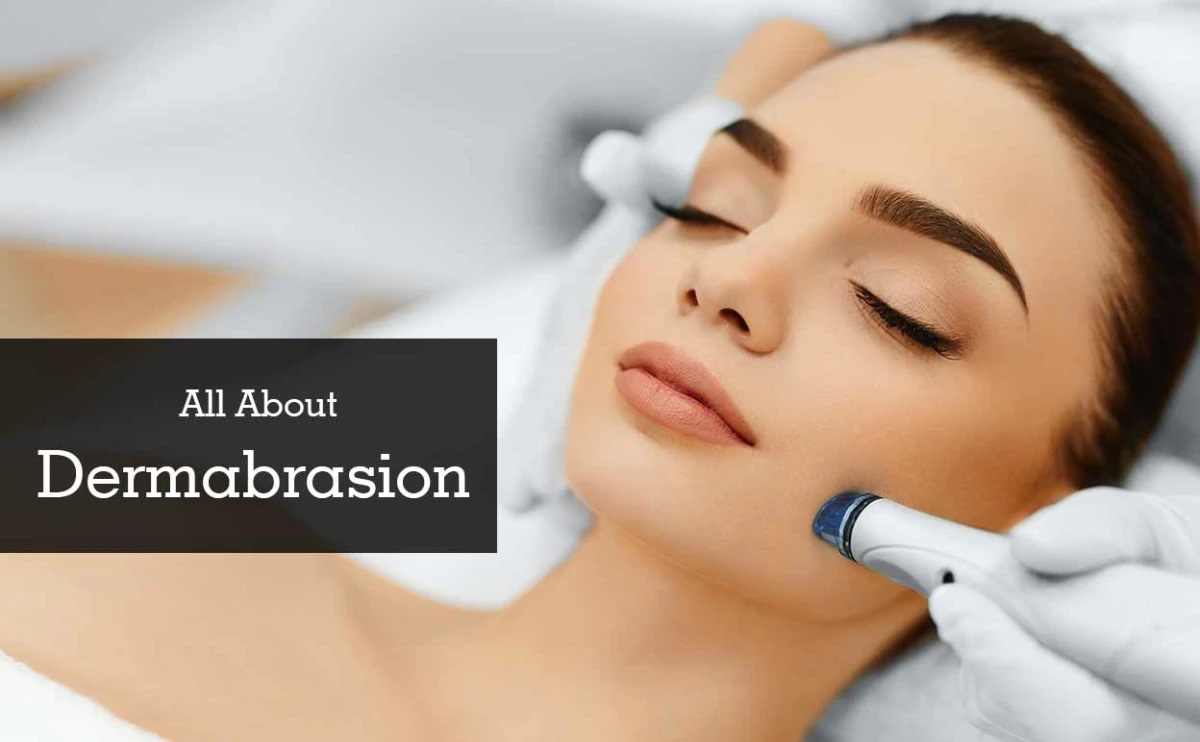Dermabrasion Treatment
For scars, fine lines, and wrinkles, dermabrasion is a cosmetic procedure in which the top layer of the skin is removed. It works by physically "sanding" down the outer layer of skin with a specialized tool. This encourages new skin growth and can result in a smoother, more youthful appearance.
Dermabrasion is usually done on the face, neck, or hands to treat a variety of skin conditions, such as:
Scars from acne, fine lines and wrinkles from aging, sun damage, hyperpigmentation, uneven skin tone, and rough skin texture are all conditions that can be treated with this procedure, which is typically carried out by a licensed dermatologist or plastic surgeon and can last anywhere from 30 minutes to several hours, depending on the size of the area being treated. Typically, anesthesia is used to reduce discomfort, and a special instrument is used to remove the top layer of skin.
The treated skin will be red and raw following the procedure, and there may be some swelling, itchiness, and burning. These side effects typically subside within a few days to a week, and the newly formed skin will appear smoother and younger-looking. In order to ensure proper healing and reduce the likelihood of infection or other complications, it is essential to carefully follow aftercare instructions.
Skin conditions like acne scars, wrinkles, age spots, sun damage, hyperpigmentation, uneven skin tone, and rough skin texture can all be improved with dermabrasion. It can result in an appearance that is smoother and more youthful, and it is typically performed on the face, neck, or hands.
The treatment begins with the application of a local anesthetic to reduce patient discomfort. The top layer of skin is then physically abraded with a specialized tool like a wire brush or motorized wand with a diamond fraise. This makes more collagen and new skin cells, both of which can make the skin look better overall.
The treated skin will be red and raw following dermabrasion, and it may experience swelling, itching, and burning. These side effects typically subside within a few days to a week, and the newly formed skin will appear smoother and younger-looking. In order to ensure proper healing and reduce the likelihood of infection or other complications, it is essential to carefully follow aftercare instructions.
You should carefully consider the potential benefits and risks of dermabrasion and discuss them with a qualified healthcare provider prior to deciding to undergo it. Dermabrasion may not be right for everyone, and people who have conditions like active herpes simplex or a history of keloid scarring may not be a good candidate for the treatment.
What Are The Benefits Of Dermabrasion Treatment
Dermabrasion also has a number of other potential uses and advantages, such as:
Getting stretch marks to look better: By removing the top layer of skin and stimulating the production of new skin cells, dermabrasion can improve the appearance of stretch marks.
Precancerous conditions of the skin: Actinic keratoses and other precancerous skin conditions can be treated with dermabrasion, which removes the top layer of skin and lowers the risk of skin cancer.
Making other skin treatments work better: Combining dermabrasion with other cosmetic procedures, such as chemical peels and laser resurfacing, can boost their efficacy and enhance the skin's overall appearance.
Getting rid of wrinkles and age spots: By removing the top layer of skin and stimulating the production of new skin cells, dermabrasion can reduce the appearance of age spots.
Enhancing skin tone and texture: By removing the top layer of skin and stimulating the production of new skin cells, dermabrasion can improve the texture and tone of the skin.
Dermabrasion is used better for improving the appearance of some skin conditions, not everyone is a good candidate for it. It is essential to talk about the potential risks and benefits with a trained medical professional. In order to reduce the likelihood of complications, it is essential to select a skilled practitioner to carry out the procedure.
Risks To Dermabrasion Treatment
Bumpy skin Skin that has been treated may develop tiny white bumps, but these typically go away on their own with regular washing of the face.
Infection. A skin infection caused by bacteria, viruses, or fungi can happen in very few cases.
Scarring. Scarring can occur if dermabrasion is done too deeply.
Greater pores After receiving a dermabrasion treatment, your pores may appear to be larger.
Discoloration of the skin After treatment, your skin may, in rare instances, become permanently lighter or darker. Risk is higher for people with darker skin.
Dermabrasion can be a good way to treat certain skin conditions and make them look better. However, it's important to know what the risks and benefits are so you can make an informed decision with the help of a trained doctor.








Comments
Post a Comment